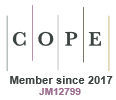Cefalexin prescribing appropriateness in general practice: an evaluation study
Ibrahim S. Al-Busaidi 1 * , Sarmad Qamar
1 * , Sarmad Qamar  1 , Yao-Min Lin
1 , Yao-Min Lin  1 , Dee Mangin 1 , Ben Hudson
1 , Dee Mangin 1 , Ben Hudson  1
1
1
Abstract
Antibiotic misuse and overuse, among other factors, are the main drivers of increased antimicrobial resistance. Although cefalexin is generally recommended as a second-line agent, recent trends in Aotearoa New Zealand (NZ) indicate increased community use, highlighting the need for closer scrutiny.
This preliminary study aimed to assess the appropriateness and guideline compliance of cefalexin prescribing.
We conducted a cross-sectional study reviewing all cefalexin prescriptions issued at a single urban medical centre in Ōtautahi Christchurch, NZ, during July–August 2023. Retrieved prescriptions were assessed for guideline compliance and clinical appropriateness using a modified audit survey based on national and regional guidelines.
We identified 27 cefalexin prescriptions provided to 25 patients (16 female, 20 NZ European; median age 48.9 years, IQR 49.7). Soft tissue (n = 11, 42.3%) and genito-urinary infections (n = 10, 38.5%) were the most common indications. Of the assessable prescriptions (n = 26), 14 (53.8%) were guideline compliant, and 15 (57.7%) were clinically appropriate. Indications were documented in 22 cases (84.6%) – 6 on the prescription and 19 in the clinical record.
This exploratory study identifies areas for targeted antimicrobial stewardship interventions in general practice to promote improved prescribing practices. A larger multicentre study is planned to further investigate prescribing patterns and appropriateness.
Keywords: antibiotic stewardship, antimicrobial resistance, cefalexin, community prescribing, guideline compliance, general practitioners, primary care, New Zealand.
References
1 New Zealand Formulary (NZF). NZF version 154; 2025. Available at https://nzf.org.nz/nzf_3048?searchterm=cephalosporins [accessed April 2025].
2 bpacNZ Primary Care Antibiotic Guide. bpacNZ. November 2024. Available at https://bpac.org.nz/antibiotics/guide.aspx [accessed January 2025].
3 bpacnz. Revisiting antibiotic use in New Zealand: how does your prescribing compare?. Bpac.org.nz. June 2024. Available at https://bpac.org.nz/2024/antibiotic-use.aspx [accessed April 2025].
4 Hagedoorn NN, Al-Busaidi I, Bridgford P, et al. Longitudinal trends in community antibiotic consumption in the Waitaha Canterbury Region of Aotearoa New Zealand over 10 years (2012-2021): an observational study. N Z Med J 2023; 136(1571): 49-64.
| Crossref | Google Scholar | PubMed |
5 Thomas MG. Improving community antibiotic prescribing to keep antibiotics working in Aotearoa New Zealand. N Z Med J 2024; 137(1592): 90-99.
| Crossref | Google Scholar | PubMed |
6 Antimicrobial Resistance Collaborators.. Global burden of bacterial antimicrobial resistance in 2019: a systematic analysis. Lancet 2022; 399: 629-655.
| Crossref | Google Scholar | PubMed |
7 Duffy E, Ritchie S, Metcalfe S, et al. Antibacterials dispensed in the community comprise 85%-95% of total human antibacterial consumption. J Clin Pharm Ther 2018; 43(1): 59-64.
| Crossref | Google Scholar | PubMed |
8 Le G, Ivy M, Dickey S, et al. A study review of the appropriateness of oral antibiotic discharge prescriptions in the Emergency Department at a rural hospital in Mississippi, USA. Antibiotics 2023; 12(7): 1186-6.
| Crossref | Google Scholar |
9 Gardiner SJ, Basevi AB, Hamilton NL, et al. Point prevalence surveys of antimicrobial use in adult inpatients at Canterbury District Health Board Hospitals. N Z Med J 2020; 133(1525): 18-33.
| Google Scholar | PubMed |
10 National Antimicrobial Prescribing Survey. National Centre for Antimicrobial Stewardship. Available at https://www.naps.org.au/Default.aspx [accessed April 2025].
11 Thilly N, Pereira O, Schouten J, et al. Proxy indicators to estimate appropriateness of antibiotic prescriptions by general practitioners: a proof-of-concept cross-sectional study based on reimbursement data, north-eastern France 2017. Euro Surveill 2020; 25(27): 1900468.
| Crossref | Google Scholar | PubMed |
12 Wushouer H, Yu J, Du K, et al. Evaluation of appropriateness of antibiotic prescribing in primary healthcare institutions in China using proxy indicator. Lancet Reg Health West Pac 2024; 49: 101132.
| Crossref | Google Scholar | PubMed |
13 Gasson J, Blockman M, Willems B. Antibiotic prescribing practice and adherence to guidelines in primary care in the Cape Town Metro District, South Africa. S Afr Med J 2018; 108(4): 304-310.
| Crossref | Google Scholar | PubMed |
14 Hek K, van Esch TEM, Lambooij A, et al. Guideline adherence in antibiotic prescribing to patients with respiratory diseases in primary care: prevalence and practice variation. Antibiotics 2020; 9(9): 571.
| Crossref | Google Scholar | PubMed |
15 Ciarkowski C, Vaughn VM. Antibiotic documentation: death by a thousand clicks. BMJ Qual Saf 2022; 31: 773-775.
| Crossref | Google Scholar | PubMed |
16 He Ako Hiringa. Antimicrobial stewardship: Primary care can build on recent gains. Available at https://www.akohiringa.co.nz/education/antimicrobial-stewardship-primary-care-can-build-on-recent-gains#GOOD [accessed April 2025].


